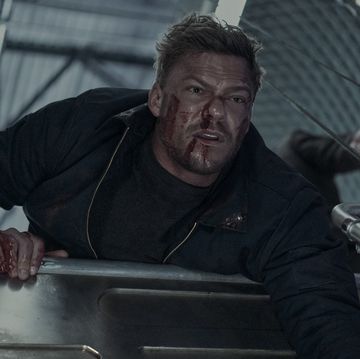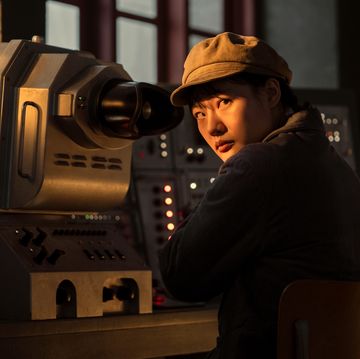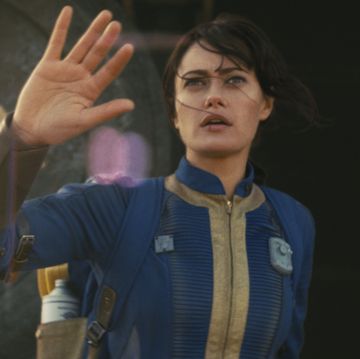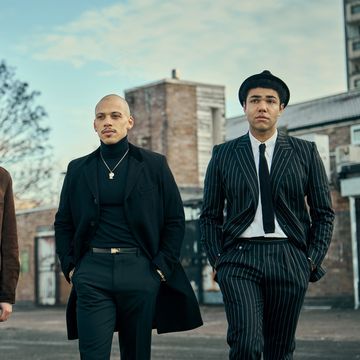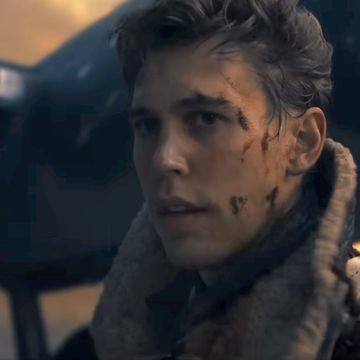Some TV shows keep their main characters as unchanging as possible, so audiences can continue to identify with the people they fell in love with.
Others allow their characters to evolve naturally, reacting to events they've experienced. You know: growth.
But, occasionally, hit shows decide to scrunch up already established personalities and chuck them into the nearest bin, before setting that bin on fire.
It's the third category we're interested in today, those odd occasions where writers decide to randomly assign radically new characteristics to television characters we already know, for reasons only they truly understand...
1. Kelly Bundy – Married With Children
Poor old Kelly Bundy. Not only is she part of literally the most dysfunctional sitcom family of all time, but she's also suffered one of the most demeaning personality changes in TV history. Kelly was introduced as a rebellious teenager with a sharp wit (well, as sharp as the Married With Children writers could manage) who did okay at school and dressed like a normal human.
Halfway through the second season, her IQ plunged, she was hyper-sexualised (with the costume department seemingly deciding to save money by never fully dressing the character), and Christina Applegate had to put up with leering groans and whoops from the studio audience whenever she entered stage-right.
The show tried to retcon Kelly's idiocy via a flashback to a childhood head injury, but it doesn't explain those early smart(er) episodes, or what happened to her wardrobe.
2. Carol – The Walking Dead
You could technically put this down to character development – lots of folk in The Walking Dead evolve significantly as a result of being faced with a rotting apocalypse – but Carol's shift from shy abuse victim to Rambo-level super-soldier is so drastic and astonishing, the only possible explanation is that she received off-screen army training between episodes.
Look, we can buy Daryl going from racist hick to caring heartthrob as a result of connecting with Rick's gang, that's a natural change. But Carol's mutant ability to be a master of every weapon she picks up, combined with apparently innate ninja skills, make her less Walking Dead and more Lady Deadpool.
3. Sansa Stark – Game of Thrones
After three seasons of humiliation and torture, Sansa Stark finally took control of her own destiny for the first time in Game of Thrones season 4's eighth episode, 'The Mountain and the Viper', shoving on a black feathery dress to signify her transition from permanent victim into dark schemer.
Don't worry, we're not going to begrudge this shift – it was perfect, and made us punch the air in glee. But that sense of joy made it even more disappointing when, in season 5, the writers seemed to completely forget about the scene, and it wasn't long before Sansa Stark reverted to the usual position of being emotionally and physically tortured by yet another murderous boyf.
Even worse, this sudden shift from evolved badass back to seen-it-all-before damsel in distress came because the showrunners decided to use poor Sansa as a stand-in for a character they didn't bother to adapt: Jeyne Poole, George RR Martin's preferred Ramsay victim.
It didn't just ruin a satisfying moment for Sansa – even master planner Littlefinger is made to look incompetent by the change; surely he should have known how evil Ramsay was when he handed Sansa over? If so, why did he do it?
4. Homer Simpson – The Simpsons
When The Simpsons started, Homer was basically a stern dad, with a deep voice, strict attitude, and an occasional propensity to misunderstand situations. He does get angry, but it's made clear that's because he's led more by his heart than his head, and ultimately, he's an ordinary dude who loves his family and tries to do his best for them, even if he didn't receive the same level of education as some of his peers.
The characterisation fitted the show's early MO: a cartoon that contained a more "honest" representation of a typical American family than any previous live-action sitcom, which led to a show that's shockingly realistic when you go back to rewatch those early episodes.
But as the episode numbers went up, Homer's IQ points went down until, out of seemingly nowhere, he became a complete caricature of his former self. Out went the realistic dialogue / situations, in came a stream of constant punchlines and surreal slapstick. Don't get us wrong, we love both Homers – but only if we imagine them as completely different people.
5. Leslie Knope – Parks & Recreation
Incompetent, bumbling and actually a tiny bit annoying, Parks and Rec's season 1 Leslie Knope is completely unrecognisable to fans who joined the show late.
This short-lived persona didn't suit Amy Poehler's natural warmth and charisma and the character couldn't connect with audiences, leading to low viewing figures.
Thankfully, a writers' strike gave the showrunners a chance to course-correct, transforming Knope from an untalented loser to a brilliant optimist (who still lost, but at least you cared when she did). It's probably the best total character change on this list, because it made the show infinitely better.
6. Stewie Griffin – Family Guy
When Stewie Griffin was introduced, his main purpose was to kill his mum, Lois. Whether he was muttering murder promises, or building kill-machines, all Stewie's plot points led to the intended death of his mother.
Then, one day, he apparently got over it, packed away his laser guns (probably, we never actually see this happen), stopped referring to his life's mission, and became just another member of the family / Brian the dog's slightly camp sidekick.
Who knows, maybe it was a phase he grew out of... even if he doesn't outwardly age on the show.
7. The Fonz – Happy Days
Believe it or not, The Fonz wasn't always the nice dude we all know and love. Now, before you shout "Heeeeeey" at us, allow us to explain. In the Happy Days pilot, Arthur Fonzarelli was intended as more of a cautionary tale than someone fans would eventually idolise and emulate.
In the original opening episode, Fonzie cheated in an exam and was expelled as a result, making him a high-school dropout and relegating him to supporting-star status.
However, despite the fact he was first seen wearing a blue windbreaker and not his iconic leather jacket (which the network initially insisted only be worn in episodes featuring a motorbike, which explains why every episode features a motorbike), the character connected with audiences, leading to his promotion to the main cast via a friendship with the Cunningham family. Henry Winkler eventually even became the top-billed actor on the show.
8. Ross Geller – Friends
To be fair, we could have written this whole article on Friends characters alone, but Ross stands out more than any other.
Dr Geller was a typical sitcom straight man in the early seasons of the show. A bit bumbling, a bit neurotic, a bit soft-spoken and shy, with plenty of room to grow into his own skin, he was as much the eyes of the audience as anyone. Then, he and Rachel got together, broke up, and Ross went CRAZY.
We blame the "WE WERE ON A BREAK" scene, which historians will pinpoint as the moment the Friends writers discovered David Schwimmer was actually quite good at funny shouting, and decided to put him in as many infuriating positions as possible, forever.






